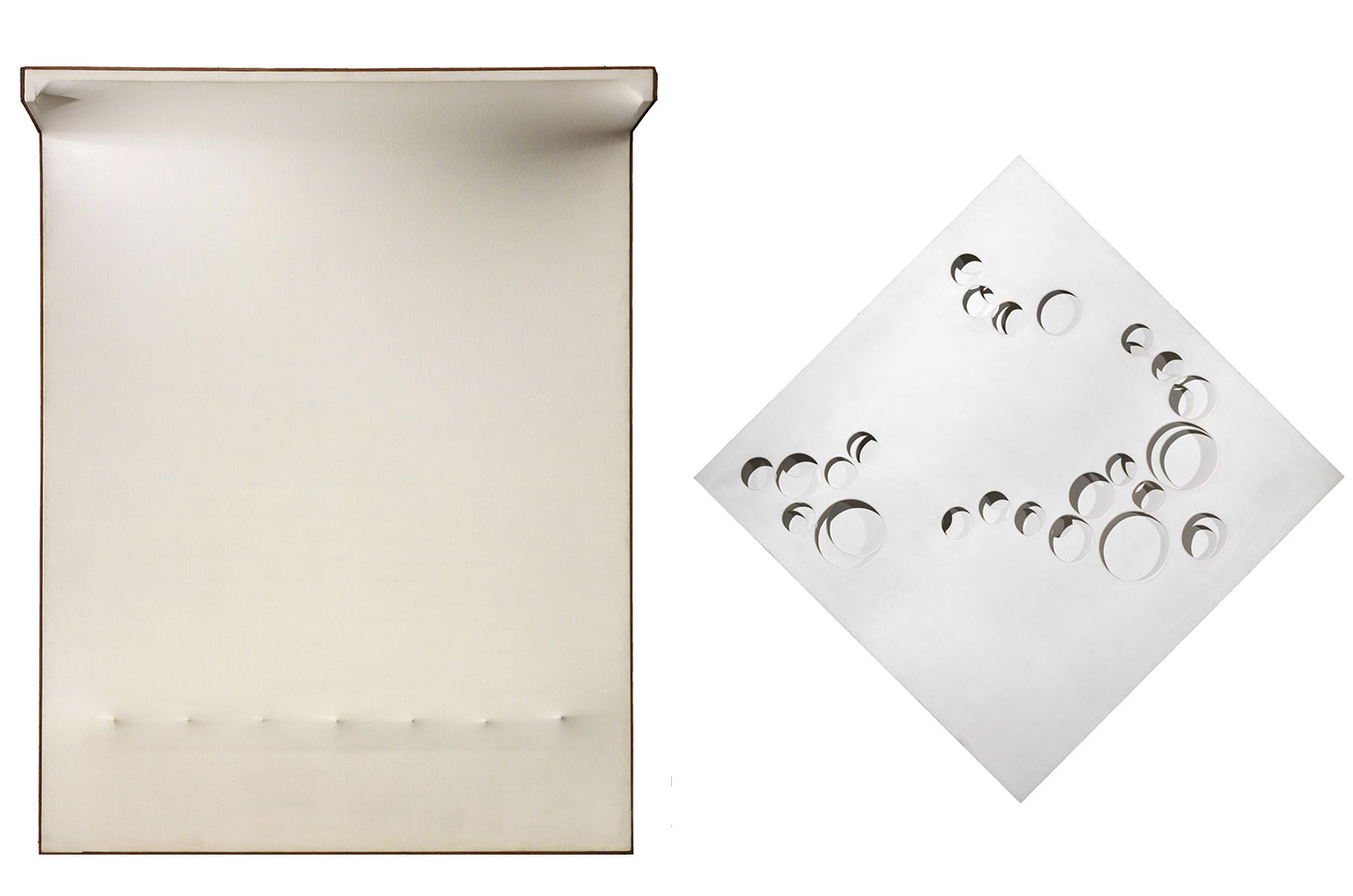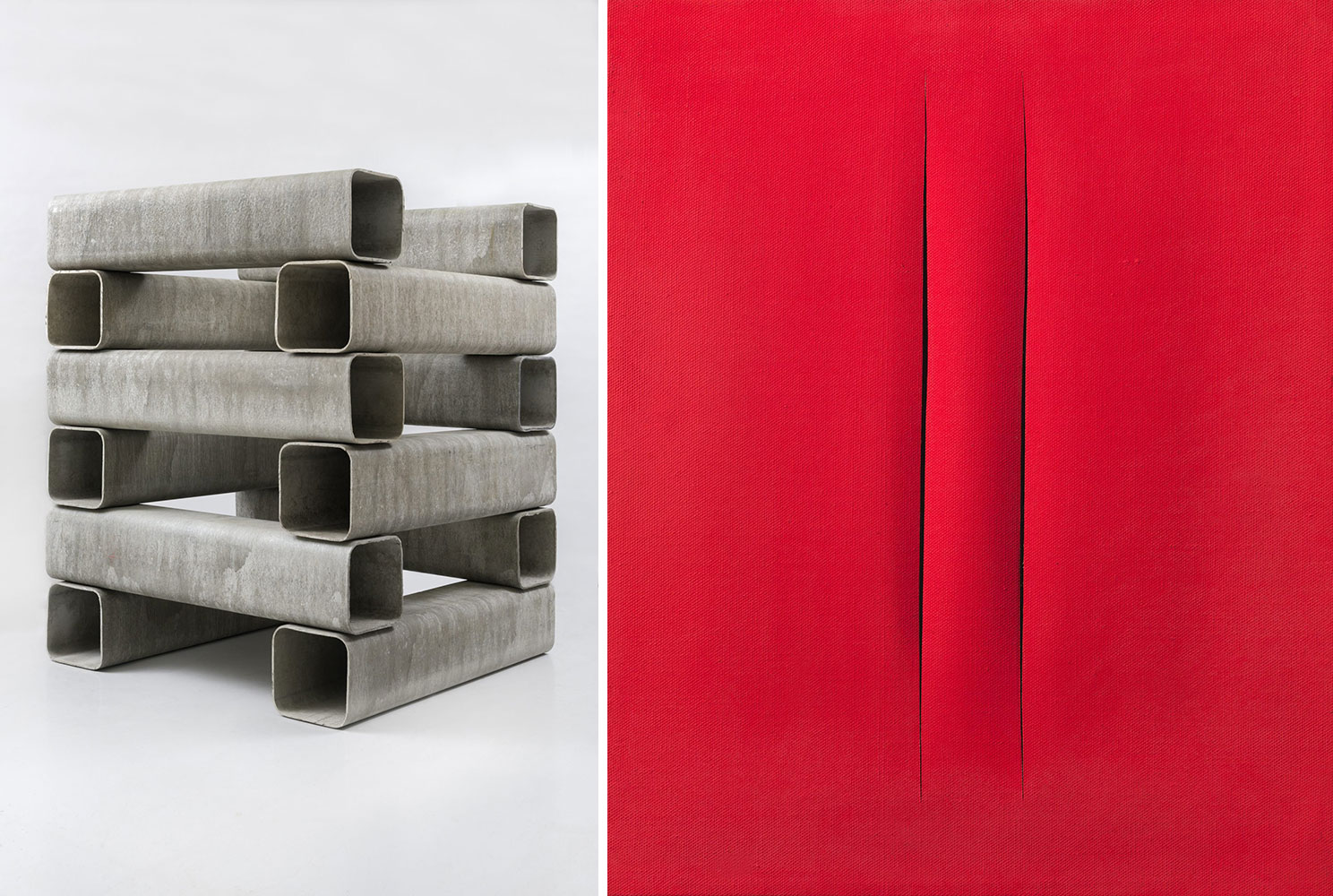ART CITIES:Paris-Italia Minimal
 The 1960s and ‘70s were revolutionary years for Italy; the nation was rapidly emerging from a turbulent post-war era and seeking a new, progressive identity. This radical spirit was harnessed by artists of the era who explored challenging Minimalist and conceptual ideas—but from within a uniquely Italian cultural perspective.
The 1960s and ‘70s were revolutionary years for Italy; the nation was rapidly emerging from a turbulent post-war era and seeking a new, progressive identity. This radical spirit was harnessed by artists of the era who explored challenging Minimalist and conceptual ideas—but from within a uniquely Italian cultural perspective.
By Efi Michalarou
Photo: Tornabuoni Art Archive
With carefully selected artwork created by Italian pioneers of visual experimentation between the late 1950s and ’70s the exhibition “ITALIA Minimal” inaugurates the new Paris Gallery of Tornabuoni Art. As the title of this exhibition suggests, the post-war work by these artists is seen through the lens of Minimalism: a movement which, although traditionally linked to American art, can offer an interesting insight into Italian post-war culture, highlighting the afinities and relationships between these figures and American and European artists, with whom there was a fertile dialogue. Italian artists interpreted Minimalism’s rejection of any decorative and narrative elements principally through a search for new materials and a focus on art’s fundamentals: color, surface, material, space and time. They combined such interests with the sense of geometry and perspectival organisation rooted in centuries of Italian art. Their pursuit of the absolute translated into an attempt to condense form into its lowest common denominator in their work, that is, to find the pure form, beyond any possible condition and contamination. These are fundamental aspects of the Italian approach to Minimalism which the exhibition explores. This exhibition takes place 20 years after the exhibition “Minimalia. An Italian 20th Century Vision” at the MoMA PS1 (10/10/1999-10/1/2000) and many of the artists who were included in that show now have works on show at Tornabuoni Art: Agnetti, Burri, Castellani, Ceroli, Colombo, Dadamaino, Fontana, Kounellis, Lombardo, Manzoni and Uncini. As that iconic MoMA exhibition illustrated, and as Tornabuoni highlights in its current show, Italian artists reflected on Minimalism in distinctive ways, attuned to their sensibilities, more intuitive than analytical, with a sense of play and warmth. They fused exploration of form with the potential of space, light and air, the metaphysical and the accidental, in search of a new, pure sensibility. The ideas explored by the exhibition still feel relevant today: in an era marked by momentous traumas that are radically transforming relationships, contexts and balances between humanity and the environment, space and time, the real and the virtual, people and politics, we look to art to help us reflect upon our world, to help us understand where we are amid the flux of changing realities. In their various pursuits of the absolute, these Italian artists attempted to find pure form: sublime perfection, so exact that it is dizzying. This is why today we return to looking at the compelling and passionate works of these visual pioneers: they give us new eyes to do so.
Works by: Vincenzo Agnetti, Alighiero Boetti, Agostino Bonalumi, Alberto Burri, Enrico Castellani, Mario Ceroli, Gianni Colombo, Dadamaino, Lucio Fontana, Jannis Kounellis, Sergio Lombardo, Piero Manzoni, Paolo Scheggi and Giuseppe Uncini.
Info: Tornabuoni Art, 16 Avenue Matignon, Paris, Duration: 22/10-22/12/20, Days & Hours: Tue-Sat 11:00-19:00, www.tornabuoniart.com

Right: Paolo Scheggi, Intersuperficie curva bianca,1967, acrylic on three shaped canvases, 140 x 140 x 7 cm, Courtesy Tornabuoni Art

Right: Lucio Fontana, Concetto spaziale, Attesa, 1965, water-based paint on canvas, 66 x 53 cm, Courtesy Tornabuoni Art
